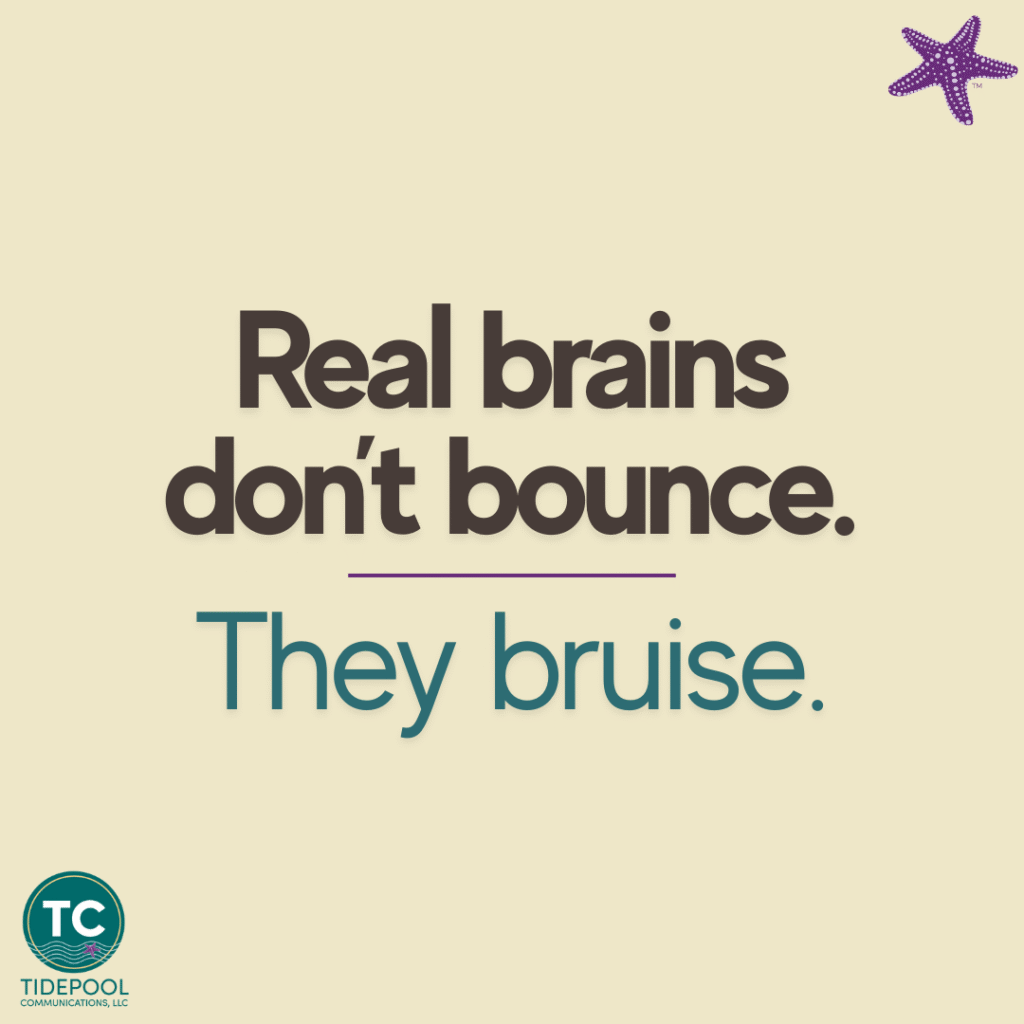There’s a moment I come back to often in conversations about brain injury. It’s not from a medical journal or a professional training—it’s from a scene in a television crime drama.
A detective is chasing a suspect through dark, foggy streets. He’s struck by a car, thrown several feet, and lands hard. The music swells. He grimaces but he gets up. Maybe he shakes his head once for effect. Then he keeps running.
There’s no mention of nausea. No slowing down from dizziness. No confusion about where he is or what just happened. He’s bleeding, sure, but the show treats the bleeding as more serious than what just happened inside his skull.
It’s a scene I’ve seen play out a hundred different ways on screen. In action movies, crime series, even comedies, characters take blows to the head when they’re slammed into walls, whacked with blunt objects, and knocked unconscious, and then moments later, they’re up again. Focused. Functional. Ready to crack a joke or throw the next punch.
It makes for exciting television, right? But it’s not real.
This is one of the most persistent and damaging myths we carry about traumatic brain injury: that it’s no big deal. We’re shown that if you’re tough enough, you can just “walk it off.” Losing consciousness or being hit hard enough to see stars (and you really can see stars if you get hit that hard) is something you bounce back from immediately, especially if you’re the hero.
But here’s what actually happens when someone sustains a concussion or other head trauma:
They may feel dazed or foggy, unable to follow a conversation.
They may be nauseated or even vomit.
They may forget where they are or what just happened.
They may feel a deep fatigue that doesn’t go away for hours or days.
They may slur their words, lose balance, or develop an immediate headache.
And those are just the short-term symptoms.
In real life, no one gets hit by a car and continues chasing someone without consequence. No one slams their head into a sidewalk and “powers through” the next scene of their day without signs of serious internal injury.
As someone who lives with the long-term effects of repeated concussions, I wish we saw more accurate portrayals of what a head injury actually looks like. If we did, we’d see what it’s like to not be able to read a grocery list. To try and fail to follow directions. To wonder why your personality feels different, your memory unreliable, your patience thinner than it used to be. When we downplay the impact of a brain injury on screen, we also downplay it in real life. When someone in our workplace, our classroom, or our family is moving more slowly, struggling to concentrate, or asking for accommodations, we think, Why can’t they just push through it? What’s the big deal?
The big deal is that real brains don’t bounce. They bruise. And those bruises can shape or even derail the rest of a person’s life.
If we want a healthier, more informed culture—one that truly supports people living with brain injuries—we need to let go of such myths. We need to stop equating silence about symptoms with strength. And we need to stop expecting real people to act like fictional heroes.
Because in the real world, healing takes time. Rest. Patience. Support.
There’s nothing weak about that.

